![Nitsch, Hermann: Das Orgien Mysterien Theater - Musik des 6 Tage Spiels 2022 [2 CDs] (Trost Records) Nitsch, Hermann: Das Orgien Mysterien Theater - Musik des 6 Tage Spiels 2022 [2 CDs] (Trost Records)](https://www.teuthida.com/productImages/misc4/33248.jpg)
Recorded in Schloss Prinzendorf shortly after the passing of composer and artist Hermann Nitsch, this realization of his six-day play festival of the Orgien Mysterien Theater, an aesthetic ritual of the glorification of existence, merging art, photography and color together, the music an essential element derived from the interplay of sound and colour through harmony or dissonance.
In Stock
Quantity in Basket: None
Log In to use our Wish List
Shipping Weight: 6.00 units
EU & UK Customers:
Discogs.com can handle your VAT payments
So please order through Discogs
Sample The Album:
Hermann Nitsch-concept, composer
Orgien Mysterien Theater Orchestra-performer
Click an artist name above to see in-stock items for that artist.
UPC: 9120036683839
Label: Trost Records
Catalog ID: TROST 235CD
Squidco Product Code: 33248
Format: 2 CDs
Condition: New
Released: 2023
Country: Austria
Packaging: Jewel Case
Recorded Schloss Prinzendorf, in Austria, on July 30th, 2022,
"24 years after Hermann Nitsch's first realization of the six-day play (1998), his Gesamtkunstwerk once again took place in July 2022, shortly after the artist passed away in April.
"The six-day play of the Orgien Mysterien Theater, is to become the greatest and most important festival of mankind (it is an aesthetic ritual of the glorification of existence). It is at the same time a popular festival and a mystery of existence brought to consciousness. The festival of the orgien mysterien theatre has no other pretext than the mystical glorification of our being here." --Hermann Nitsch.
The Orgien Mysterien Theatre is an artistic endeavor. In addition to the visual idea of form, music plays an essential role. The basic concept of the play is based on a symphonic idea, performed by the Orgien Mysterien Theater Orchestra. The setting for the action was taking place in the castle complex in Prinzendorf with all its rooms, as well as the surrounding landscape of the Lower Austrian Weinviertel. Liner notes by the musical director of the o.m. theatre Andrea Cusumano (German and English)."-Trost
"THE TOTAL ART WORK OF THE Orgies Mysteries Theatre AND ITS DISCIPLINES
Hermann Nitsch developed the Orgies Mysteries Theatre (O.M.Theatre) in the mid-1950s. All the disciplines of this total art work with a claim to completeness hark back to the 1950s and '60s and have always been rooted in an overall concept.
Peter Gorsen remarks that the origins of the O.M. Theatre lie in literary and sensory language. The artist first articulated the idea of his total artwork in verbal poetry. In 1956 - influenced by the Greek tragedies, by Georg Trakl, German Expressionism, French Symbolism, Stephan Georges, James Joyce and the Surrealists - he began writing a drama which was to last six days. Hermann Nitsch conceived "a kind of compressed archetypal drama, aiming to summarise the conflicts and catastrophes of the myths. The Oedipus material was processed in the same way as the Nibelungen-Myth, the Atreides myth, the death of the Sun-hero and the Catastrophe of the Cross." However, this work remains unfinished. After two years, the artist realised that language did not have sufficient capacity to convey the required profound and convincing emotional intensity, and transferred his level of expression to different areas. He started working with actual substances - such as milk, vinegar, wine, blood or meat, which stimulate the senses of smell, touch and taste; this seemed to him more conducive to the enhancement of sensual impressions.
In the staging of such events, art is liberated from the task of depiction and representation - as was generally striven after in the 20th century, especially in happenings, performances and Actionism during the 1960s. Art transcends the boundary of life and reality - art and life become one. In real time, sensuous reality is experienced. Literary experience is replaced by real-life experience, thus making it possible to dispense with spoken language. Nitsch says that it is not language (linguistic association) that plumbs the depths, but ecstatic sensual experience achieved through 'Aktionen', tending towards orgiastic excesses, which will expose what has been repressed.
Around 1960, Nitsch abandoned the traditional representational level of the picture and the classic form of theatre. He tried to reduce the means of representation to its elementary and original state or to the purely material - language to the scream, music to the noise, painting to spilling paint. He changed from the word to the action and from portrayal to material. He sought reality instead of theatre and arrived at the orgiastic 'Aktion', whose purpose is reality and life itself - with all its positive and negative aspects, comparable with the "Theatre of Cruelty" by Antonin Artaud, which Nitsch himself refers to. With this, the artist not only achieves a lasting expansion of the pictorial resources, but at the same time a "theatrical dramatic expansion of art".
In 1960, on the basis of the drama, the psychology of Sigmund Freud and the philosophy of Friedrich Nietzsche, Hermann Nitsch contrives a "dramaturgical abreaction model" (Hermann Nitsch). The guiding characters in the abreaction play of the O.M.Theatre are Dionysus the destructive fertility god who embodies the primal principle of being, and Christ, who sacrificed himself for love. The dilaceration of Dionysus is seen as a model for the Passion of the Cross; both are principle leitmotifs of the O.M.Theatre. Added to this are the blinding of Oedipus, the self-emasculation of Attis, ritual regicide, the killing of totem animals and the totem meal. The subject is human existence itself - birth, life, death, rebirth. Myth and ritual are his tools. Hermann Nitsch takes up the theme of rituals of sacrifice and re-enacts them. In the abreaction play, the dilaceration of the lamb as a substitute sacrificial act leads to an immediate association of mythical cult with Christian religion. In this context, the artist and the participants assume the role of suffering humanity, which is to be saved through the retrieval of what is repressed. The sensuous experience curve goes from sensual orgy, to orgiastic excess, to ecstasy, right up to meditation and leads to emotional realisation and catharsis. Form is essential here. "Form has a deep metaphysical moral and ethic quality." Trough form, negative and destructive impulses can be channelled into abreaction. (This is why the artist always draws up precise scores with strict stage directions.) The abreaction rituals of the O.M.Theatre, in which real actions expose participants to a deep experience of the self, with the aim of revealing, channelling and redirecting what is repressed and submerged.
The O.M.Theatre is a "basic experience of excess and a celebration of resurrection, a sadomasochist excess and catharsis, a brutal dismemberment and a harmonising synthesis, an incantation of the myth as a contracted worldview and psychoanalytical therapy." "Every descent into the perverse and the unappetising takes place for the purpose of bringing about healing awareness." Increasing disgust and horror and crossing all boundaries and taboos should ultimately lead to an affirmation of life transcending life and death; being is to be embraced in its entirety.
The paintings of the O.M.Theatre are based on informal art. Action painting, the excessive splashing of paint on vertical and horizontal canvases - which Nitsch himself describes as visual grammar of the 'Aktionstheater' on a pictorial surface - is based on tachism as conditional on shaping and expressing the unconscious in a sensually stimulated production process. The elementary sensual stimulation of painting, effected by splashing, spraying and smearing paint, corresponds to the 'Aktionen' with meat, blood and intestines, and appears equally suitable for abreaction of repressed desires and urges. The painting 'Aktionen' (in front of an audience from 1960) with its temporal ecstatic processes are the predecessors of the actual theatrical 'Aktionen' in which the pictorial resources are replaced with real ones. The painting process increases in intensity to an 'Aktion'; the pictorial surface is replaced with reality. In 1962,for the first time in a painting 'Aktion', blood was splashed and a slaughtered lamb was crucified. In 1963, the first public 'Aktion' took place. By the mid-1960s, 'Aktionstheater' had completely replaced painting, which did not return until many years later, when it was newly established as an individual genre.
Since 1963, instead of painting, which apparently culminated in the O.M.Theatre, the RELICS of the 'Aktionen' are transformed into artistic objects. The fabrics and clothes, marked by the processes of the 'Aktion', stained and besmeared, are considered authentic documentation of the events; they preserve the actions and their traces and retain their relevance over time. The artist has been systematically collecting the action relics - sheets, shirts, stretchers - since 1968. A year later, Nitsch included Eucharistic vestments from the Christian church in the action painting. Later, he extended this idea to the smocks he himself wears for painting - as true proof of the (ritual) event. In 1983, after twenty years, Hermann Nitsch takes up painting again - more joyfully, intensively, spontaneously and insouciantly than ever - and recognises, completely contrary to his practise of the two previous decades, the mutual necessity of painting 'Aktion' and the O.M.Theatre. Since then he has been carrying out painting 'Aktionen' periodically.
The second phase of painting is characterised by the use of bright colours (since about 1989) - initially monochrome, and later in combination. For a long time, the artist exclusively used the colour red - the most intensive colour, which signifies life and death, symbol of fire, love, flesh, blood - followed by black. In the 1990s his work opened up to a larger spectrum employing - apart from yellow - the liturgical colours, violet, blue, green and white. Their effect and symbolic meaning is consciously used in the painting and Actionist work. The excessive, subjective and immediate painting process is subject to various pragmatic and contentual preconditions and devoted to various problems and accordingly produce different pictorial results. The central focus is the experiment with the consistency of the paint which varies from liquid to pastose. The paint is spilled, splattered, brushed or smeared with bare hands; the artist plunges his arms into it as he does with animal intestines. Here, art informel gesture is combined with Actionist reality.
Parallel to the painting 'Aktionen', he creates individual paintings in a standardised format of two by three metres, as, for example the Kreuzwegstationen [the Stations of the Cross] which are preserved, as opposed to the early painting 'Aktionen' which were produced on paper and destroyed. Later, Hermann Nitsch also worked on multi-part picture cycles - often characterised by the central application of a smock which, similarly to the relic of the 'Aktion', is to be interpreted as a stained sacrificial garment. In the 1990s, the cycles begin to vary and the works are no longer tied so strongly to one concept. The painting is seen more freely as a genre in its own right and each work is more autonomous. Nevertheless, for Hermann Nitsch, painting is always a "introductory formula, a formula for meditation tending toward the orgiastic event of the dramatic excess [...]" and "painting should open our receptivity to deep and intense sensory combinations."
Photography and film are just as significant for the O.M.Theatre as painting, drawing, Graphics and music. From the beginning, Hermann Nitsch's 'Aktionen' were recorded, or generally carried out as pure photo 'Aktionen', excluding the public - as, for example for the first time in 1963. It was important to the artist that the recording should be bound to the work in a neutral way, but carried out from an appropriate viewpoint so that the images reflect the concept of the work as a whole.Grafik
The drawings and prints are also inseparably connected with the oeuvre and represent immediate parts of it.
In the 1960s and '70s, the work of Hermann Nitsch was defined primarily by Actionism. His graphic works, particularly his architectural drawings (since 1964) are of less significance. From the 1970s, only two large-scale drawings are known: Die Eroberung von Jerusalem [the conquest of Jerusalem], 1971 and Das letzte Abendmahl [the Last Supper], 1976/79. Years later, in 2008 and 1983 respectively, they were both made into prints.
Originally, in the 1950s, drawing was a useful discipline for studies and sketches on religious topics as well as formulations of art informel scribble drawings; from 1958 onwards it became a purely practical process employed to complement the scores composed, then rapidly advancing to become a resource in its own right. More than a mere concept, image or sketch, it ultimately attained a status independent of painting. In printing, however, the two are combined.
In the 1950s, Hermann Nitsch attended the Academy of Graphic Art in Vienna, finishing with a diploma in 1957. During this time the artist acquired the skills which are considered the basis of his extensive and complex graphic work, with its wealth of technical subtlety and distinctive features devised by the artist and his colleagues, not least for use in their own work. Further significant characteristics of this field is the intensity manifested here in the extent of the work involved, and the inclination towards the monumental and the visionary, evident in the results which are very different from traditional printed material, regarding dimensions, technique and quality. The printing procedure and the processing of the prints is so sophisticated and often also complex, that the results can hardly be compared with classic graphics. In Nitsch's work, even when we talk about an edition, it always consists of manually designed, unique individual works - Nitsch has labelled them "Unikatgrafik".
Since the 1980s, Hermann Nitsch has been working in the graphics field and created an extensive oeuvre. Architectural drawings form the basis for the prints; it is the starting point and motif for the majority of the published prints. From 1984 to 1991, he produced the project "Die Architektur des Orgien Mysterien Theaters" [the architecture of the O.M. Theatre]; this collection, consisting of four folders with direct lithographs of over 3,300 individual prints, is the centrepiece of his graphic work. The content, as the title suggests, refers to the vision of a subterranean urban architecture, like a grail temple, dedicated to the "sacred acts" of the O.M. Theatre. This is an extensive system of tortuous passages and rooms which can be constructed either from abstract geometrical structures or organic forms derived from the human body. It was supposed to be built Prinzendorf, on six subterranean levels in "uterine darkness", in the "bowels of the earth", in analogy to the exploration of deep psychological levels of being. Apart from individual prints, the folders contain remarkable large folding maps measuring 140.5 x 225.5 and 240 x 310 cm.
Since 1991, Hermann Nitsch has been working together with Kurt Zein. This period is marked by the impressive extension of technical printing possibilities which, of course had a significant effect on the results. They are produced in an elaborate process in various steps. The printing is done, for example on originals, on laid paper, on sheets of paper which have been individually splashed with blood or painted in Aktionist style. In the printing process, the colours are altered on each sheet and always precisely coordinated; some plates are superimposed in a complicated procedure. Works such as Das letzte Abendmahl, 1983, Die Eroberung von Jerusalem, 2008, or Die Grablegung [The Entombment (of Christ)], 2008 are printed on original relics. The latest monumental work in the field of graphics is the large-format, Hebrew-German art book LEVITICUS, which Hermann Nitsch published in collaboration with Har-El Publishers (16 copies). It refers to the third book of Moses, which describes the sacrificial rituals in the Temple of Jerusalem. The work is accompanied by twelve terragraphs (screen prints with sand), with a surface structure similar to that of the splatter paintings.Colour scales
Colour plays a central role in all of Hermann Nitsch's work. It represents a sensory and pictorial value, the function and effect of which in any given work is not to be underestimated. Its symbolic, sensual, expressive and associative qualities are of great service to the specific artistic concept. In the colours scales, on the other hand, it is a question of a relevant objectification of sensory perception.
At the end of the 1960s, Nitsch designed his first colour theory for the O.M. Theatre. He examined the interaction of the colours in individual colour scales, and assigned certain acoustic sounds to the nuances. From 1979 to 1982 and from 1989 to 1991, Nitsch gave courses in colour exercises at the Städelschule in Frankfurt am Main, where he held a teaching post from 1989 until 2003. His intention was to impart to the students an unencumbered attitude and a neutral approach to colours and their use, unconnected with classic patterns of perception, with the aim of "pure pleasure" in the use of colour. The idea was that, contrary to all traditional schemes, colours should be perceived intuitively and through the emotions.
Nitsch devised a system of comprehensive colour scales in which individual shades with a mutually enhancing effect were lined up harmoniously, so as to form well-balanced combinations. As always in his work, there are basic parameters, concepts, instructions and exercises - a kind of dramatic composition defining the strategy and radius of operation of the artistic activity. Within these guidelines, there is freedom to operate according to senses and instinct, and the work should be perceived synaesthetically. The colours can be interpreted as musical sounds, shapes, smells or tastes, or they can form a joint unity of sensory perceptions.Music
The essential element in the work of Hermann Nitsch is the interplay of sound and colour - their harmony or dissonance. This kind of dovetailing is evident in his scores, in the autograph (stage) instructions for the "Aktionen" which the artist has been writing down since the 19960s. Here tonal notation is sometimes replaced by coloured lines. In his music, as in his theory of colours, the only important thing is tone quality and harmony; melody and rhythm are obsolete. The intention is to go beyond the classical categories of music to achieve an extreme form of expression which will sustain the intensive, ecstatic basic motif. Since the 1970s, and from the time when the "Aktionen", festivals and performances were held at Prinzendorf castle, music has been an essential element of the O.M. Theatre. In its archaic form - as sound, scream, noise -, to some extent it replaces spoken language. Neither narrative nor description, it is nevertheless an equivalent form of expression. Emerging from the state of excitation arising within the "Aktion" it has at the same time a heightening effect. The "Aktionen" are accompanied and forcefully intensified by "noise orchestra", "scream choir" and traditional wind band with electronic amplification. Nitsch postulates: "An orgiastic music is to transpose us to an intensive state wherein we find being".
- Christine Wetzlinger-Grundnig
published in Hermann Nitsch. The Orgies Mysteries Theatre and its disciplines as a total artwork, exh. cat. MMKK, Klagenfurt 2012, p. 62-70.
Get additional information at The Nitsch Foundation Website
Artist Biographies
• Show Bio for Hermann Nitsch "Hermann Nitsch (born 29 August 1938) is an Austrian avant-garde artist who works in experimental and multimedia modes. Born in Vienna, Nitsch received training in painting when studied at the Wiener Graphische Lehr-und Versuchanstalt, during which time he was drawn to religious art. He is associated with the Vienna Actionists-a loosely affiliated group of off-kilter and confrontational Austrian artists that also includes Günter Brus, Otto Muehl, and Rudolf Schwarzkogler. Nitsch's abstract 'splatter' paintings, like his performance pieces, are inspired by his neutral perspective on humanity and being human. In the 1950s, Nitsch conceived of the Orgien Mysterien Theater (which roughly translates as Theatre of Orgies and Mysteries or The Orgiastic Mystery Theater), staging nearly 100 performances between 1962 and 1998." ^ Hide Bio for Hermann Nitsch
7/9/2025
Have a better biography or biography source? Please Contact Us so that we can update this biography.
Track Listing:
CD1
01. Day 1- Morning 54:35
CD2
01. Day 1- Finale 51:06
Compositional Forms
European Improvisation, Composition and Experimental Forms
Large Ensembles
Staff Picks & Recommended Items
New in Compositional Music
Search for other titles on the label:
Trost Records.


![Nitsch, Hermann: Das Orgien Mysterien Theater - Musik des 6 Tage Spiels 2022 [2 CDs] (Trost Records) Nitsch, Hermann: Das Orgien Mysterien Theater - Musik des 6 Tage Spiels 2022 [2 CDs] (Trost Records)](https://www.teuthida.com/productImages/full/33248.Full.jpg)
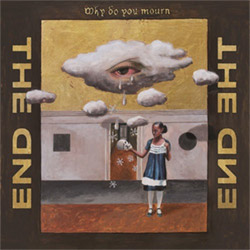
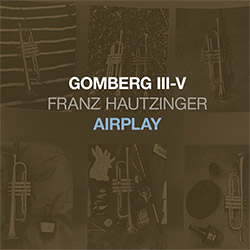
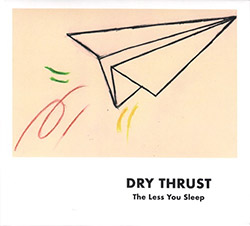
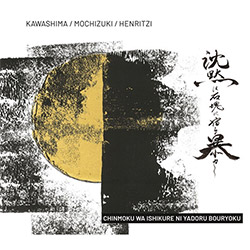
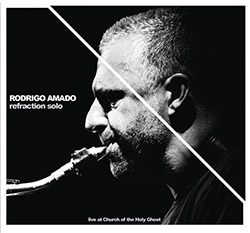
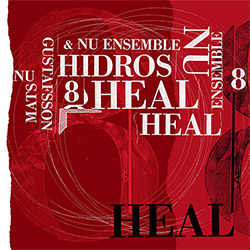
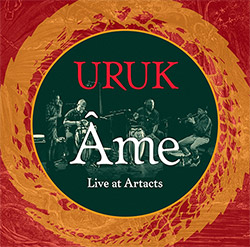
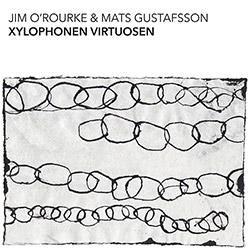
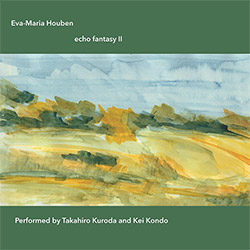
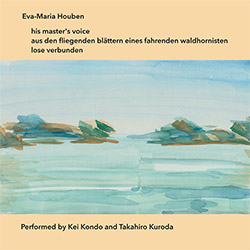
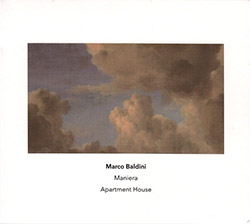
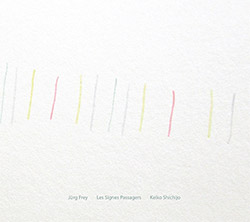
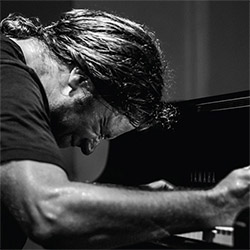
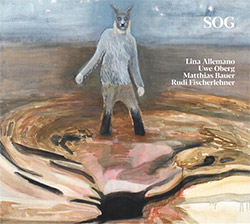
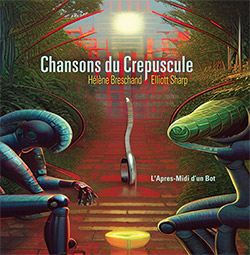
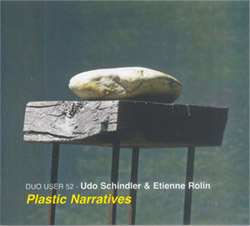
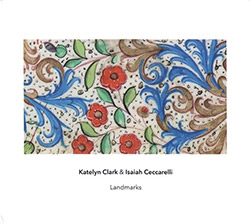
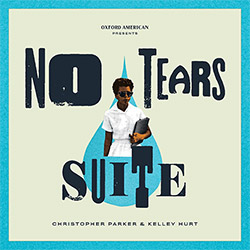
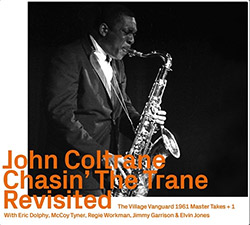
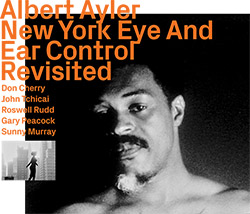
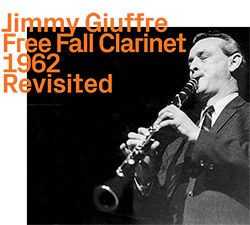
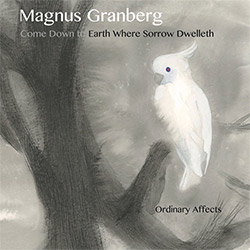
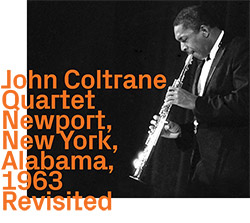
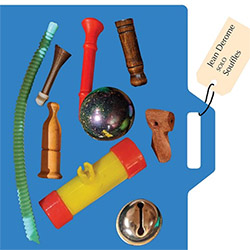
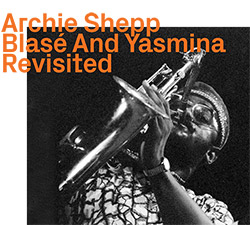
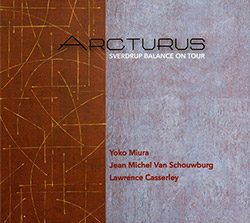

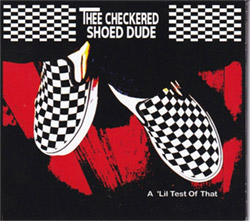
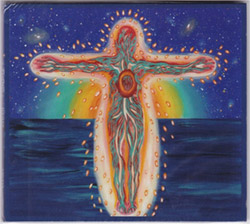
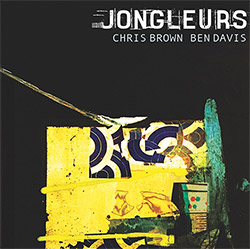
![BlueRing Improvisers: Materia [2 CDs]](https://www.teuthida.com/productImages/misc4/36513.jpg)
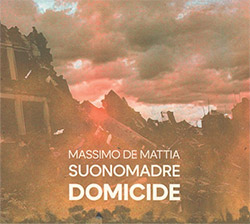
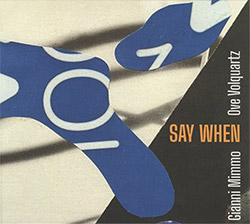
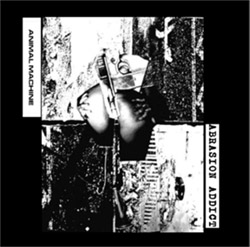

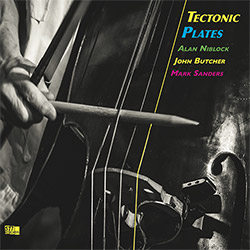
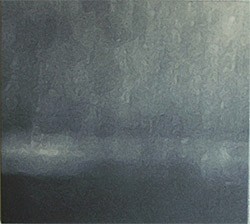
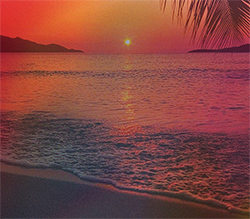
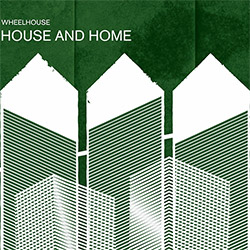
![Wheelhouse (Rempis / Adasiewicz / McBride): House And Home [VINYL]](https://www.teuthida.com/productImages/misc4/36462.jpg)
![+DOG+: The Light Of Our Lives [2 CDs]](https://www.teuthida.com/productImages/misc4/36009.jpg)

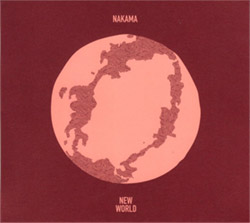
![Parker, Evan / Jean-Marc Foussat: Insolence [VINYL]](https://www.teuthida.com/productImages/misc4/36398.jpg)
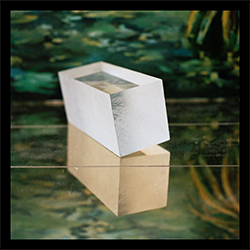
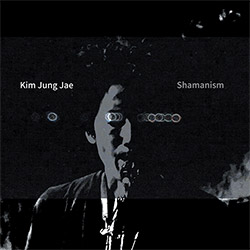
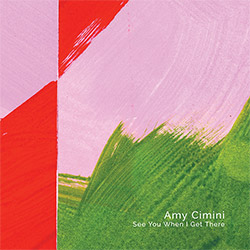
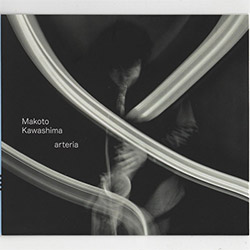
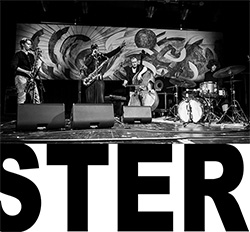
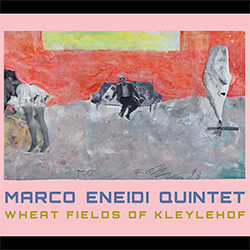
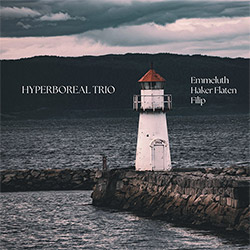
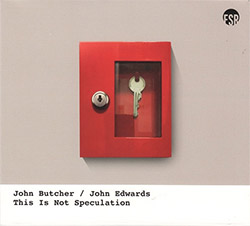
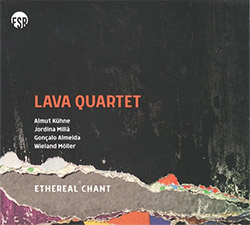
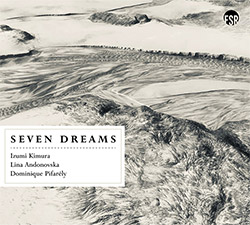
![Deupree, Jerome / Sylvie Courvoisier / Lester St. Louis / Joe Morris: Canyon [2 CDs]](https://www.teuthida.com/productImages/misc4/36404.jpg)

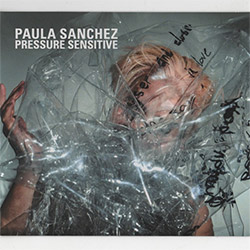

![Eventless Plot | Haarvol: The Subliminal Paths [CASSETTE + DOWNLOAD]](https://www.teuthida.com/productImages/misc4/36232.jpg)

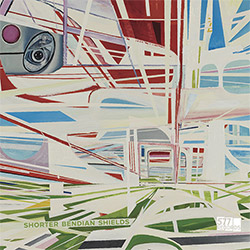
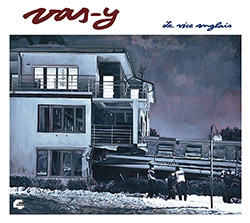
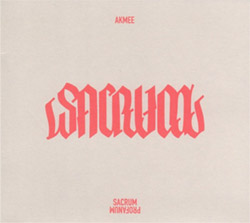

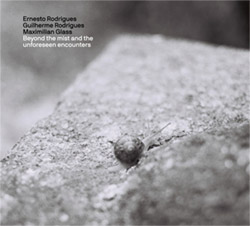
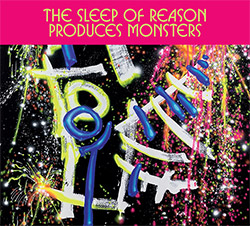
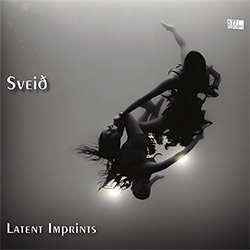
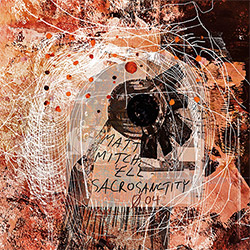
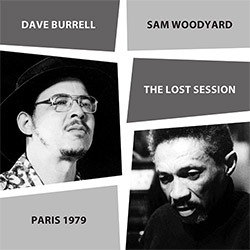
![Eventless Plot | Francesco Covarino: Methexis [CASSETTE + DOWNLOAD]](https://www.teuthida.com/productImages/misc4/36231.jpg)
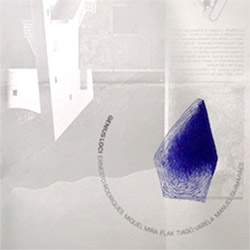
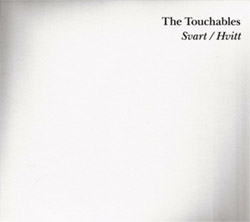
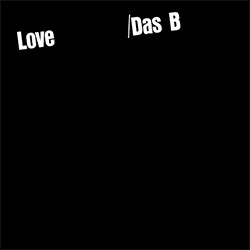
![Das B (Mazen Kerbaj / Mike Majkowski / Magda Mayas / Tony Buck): Love [VINYL]](https://www.teuthida.com/productImages/misc4/36329.jpg)
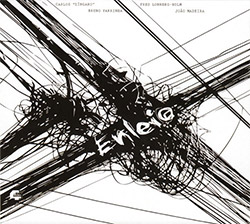

![Eternities: Rides Again [CASSETTE]](https://www.teuthida.com/productImages/misc4/36247.jpg)
![Lopez, Francisco: Untitled (2021-2022) [2 CDs]](https://www.teuthida.com/productImages/misc4/36438.jpg)


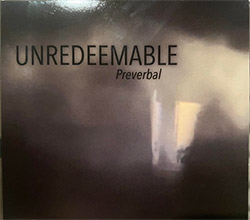
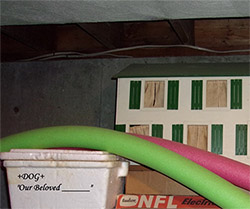
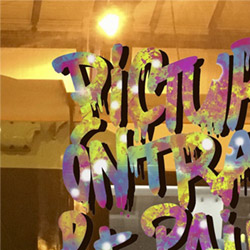
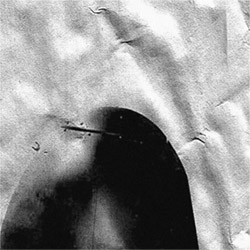
![Money : Money 2 [2 CDs]](https://www.teuthida.com/productImages/misc4/35894.jpg)
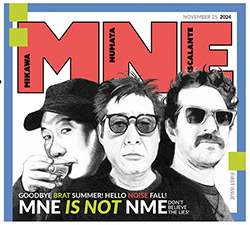

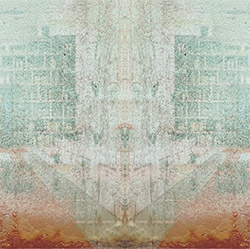
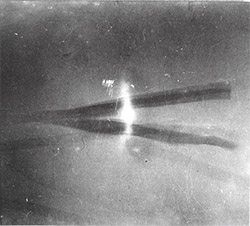
![Klinga, Erik: Elusive Shimmer [VINYL]](https://www.teuthida.com/productImages/misc4/36258.jpg)
![CHANGES TO blind (Phil Zampino): Volume 9 - I Wave on a Fine Vile Mist [CD + DOWNLOAD]](https://www.teuthida.com/productImages/misc4/36061.jpg)

![Wallmart / Rubbish: Asset Protection [split CD]](https://www.teuthida.com/productImages/misc4/35900.jpg)
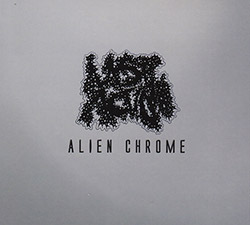
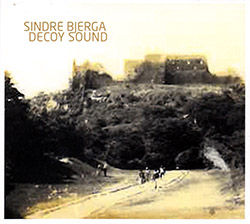
![+Dog+: The Family Music Book Vol. 5 [2 CDs]](https://www.teuthida.com/productImages/misc4/35897.jpg)
![Kuvveti, Deli : Kuslar Soyledi [CASSETTE w/ DOWNLOAD]](https://www.teuthida.com/productImages/misc4/36107.jpg)

![Brown, Dan / Dan Reynolds: Live At The Grange Hall [unauthorized][CASSETTE]](https://www.teuthida.com/productImages/misc4/36245.jpg)


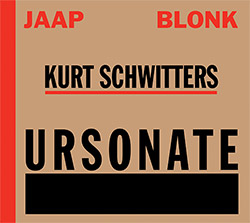
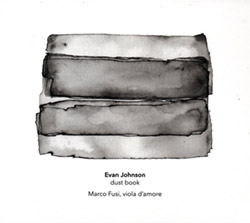
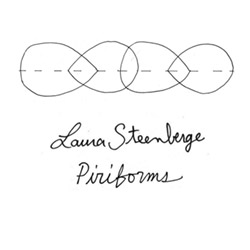
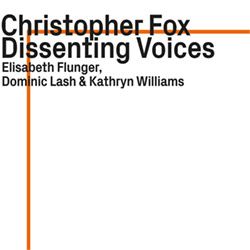

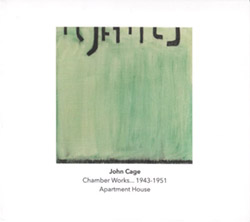
![Palestine, Charlemagne / Seppe Gebruers: Beyondddddd The Notessssss [VINYL]](https://www.teuthida.com/productImages/misc4/36206.jpg)
![Palestine, Charlemagne / Seppe Gebruers: Beyondddddd The Notessssss [NEON GREEN VINYL]](https://www.teuthida.com/productImages/misc4/36207.jpg)
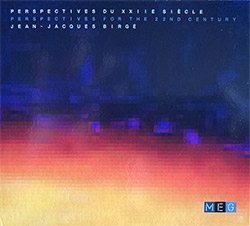
![Laubrock, Ingrid: Purposing The Air [2 CDs]](https://www.teuthida.com/productImages/misc4/35639.jpg)
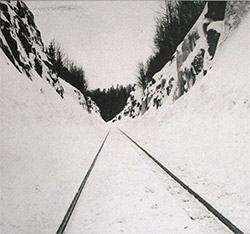
![Yoko, Ono / The Great Learning Orchestra: Selected Recordings From Grapefruit [2 CDs]](https://www.teuthida.com/productImages/misc4/35841.jpg)

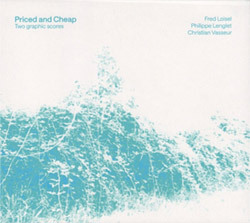
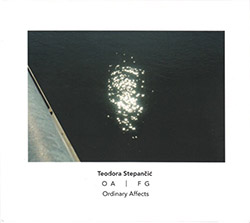
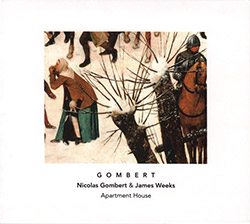

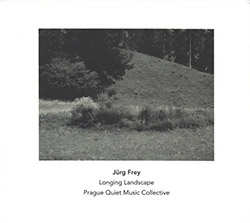
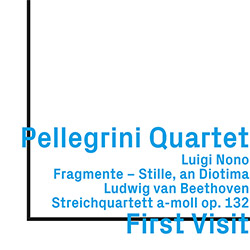

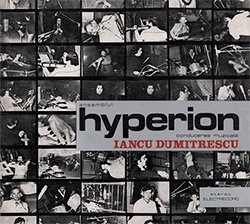
![Zorn, John / JACK Quartet: The Complete String Quartets [2 CDs]](https://www.teuthida.com/productImages/misc4/35609.jpg)
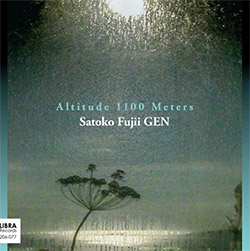
![Lonsdale, Eden: Dawnings [2 CDs]](https://www.teuthida.com/productImages/misc4/35480.jpg)
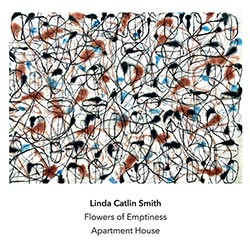
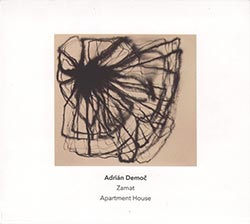

![Sorry For Laughing (G. Whitlow / M. Bates / Dave-Id / E. Ka-Spel): Rain Flowers [2 CDS]](https://www.teuthida.com/productImages/misc4/35985.jpg)

![Rolando, Tommaso / Andy Moor : Biscotti [CASSETTE w/ DOWNLOADS]](https://www.teuthida.com/productImages/misc4/36106.jpg)


![Electric Bird Noise / Derek Roddy: 8-10-22 [CD EP]](https://www.teuthida.com/productImages/misc4/35970.jpg)








![Elephant9 : Mythical River [VINYL]](https://www.teuthida.com/productImages/misc4/34624.jpg)



![Elephant9 with Terje Rypdal: Catching Fire [VINYL 2 LPs]](https://www.teuthida.com/productImages/misc4/35355.jpg)
![Deerlady (Obomsawin, Mali / Magdalena Abrego): Greatest Hits [VINYL]](https://www.teuthida.com/productImages/misc4/34876.jpg)
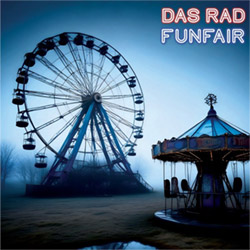
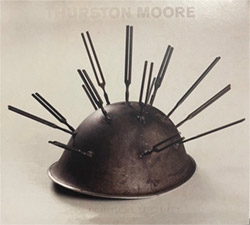
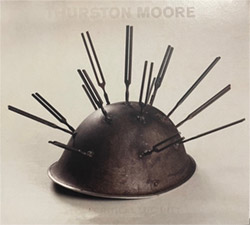
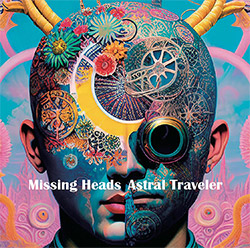
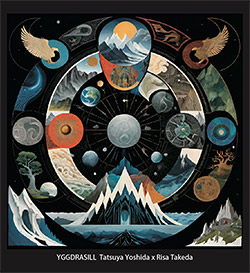
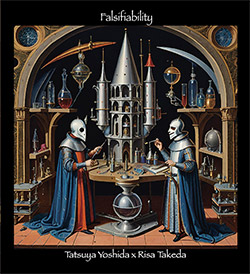
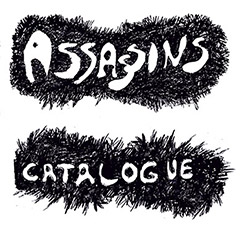
![Surplus 1980: Illusion of Consistency [CD]](https://www.teuthida.com/productImages/misc4/35069.jpg)
![Staiano, Moe: Away Towards the Light [VINYL + DOWNLOAD]](https://www.teuthida.com/productImages/misc4/35037.jpg)
![Coley, Byron: Dating Tips for Touring Bands [VINYL]](https://www.teuthida.com/productImages/misc4/17906.jpg)

![Lost Kisses: My Life is Sad & Funny [DVD]](https://www.teuthida.com/productImages/misc4/lostKissesDVD.jpg)